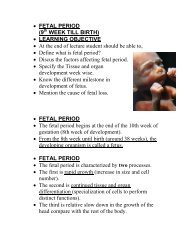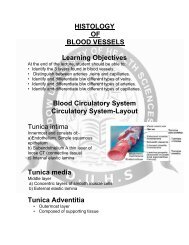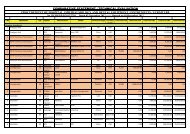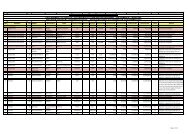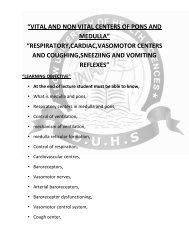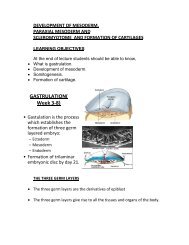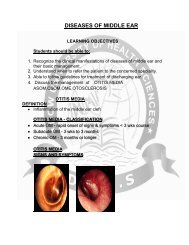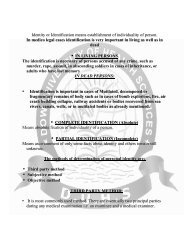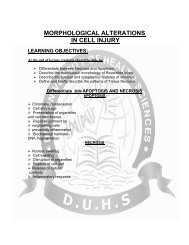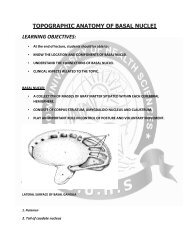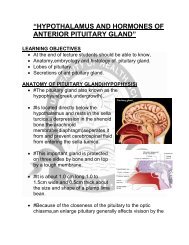“VITAL AND NON VITAL CENTERS OF PONS AND MEDULLA”
“VITAL AND NON VITAL CENTERS OF PONS AND MEDULLA”
“VITAL AND NON VITAL CENTERS OF PONS AND MEDULLA”
You also want an ePaper? Increase the reach of your titles
YUMPU automatically turns print PDFs into web optimized ePapers that Google loves.
“DETERMINANTS <strong>OF</strong> VENTILATORY RATE”<br />
• Ventilatory rate (minute volume) is tightly controlled and<br />
determined primarily by blood levels of carbon dioxide as<br />
determined by metabolic rate.<br />
• Blood levels of oxygen become important in hypoxia.<br />
• These levels are sensed by chemoreceptors in the medulla<br />
oblongata for pH, and the carotid and aortic bodies for oxygen<br />
and carbon dioxide.<br />
• Afferent neurons from the carotid bodies and aortic bodies are<br />
via the glossopharyngeal nerve (CN IX) and the vagus nerve (CN<br />
X), respectively.<br />
“FEEDBACK CONTROL”<br />
• Receptors play important roles in the regulation of respiration;<br />
central and peripheral chemoreceptors, and mechanoreceptors.<br />
• Central chemoreceptors of the central nervous system, located<br />
on the ventrolateral medullary surface, are sensitive to the pH of<br />
their environment.<br />
• Peripheral chemoreceptors act most importantly to detect<br />
variation of the oxygen in the arterial blood, in addition to<br />
detecting arterial carbon dioxide and pH.<br />
• Mechanoreceptors are located in the airways and parenchyma,<br />
and are responsible for a variety of reflex responses. These<br />
include:



